Indians take immense pride in their culture and tradition, where Indian women hold a very high place of reverence and respect in society. The mountains, rivers and nature are given female names and are adored, respected and worshipped as Goddesses. Indian women have always been adorned with jewels and accessories and are a sign of grace and beauty. The married women in India wear an assortment of accessories from head to toe - is this just a mark of respect, or are there any hidden meanings/messages to this tradition?
Indian Women are unique. She is the epitome of Indian tradition and custom as she carries herself with grace, poise and elegance. Married women, in particular, are very easy to identify as she wears many accessories. Why do married women in India wear these accessories? What does it mean to them? What are the hidden messages behind these traditions and customs?
1. Bindi
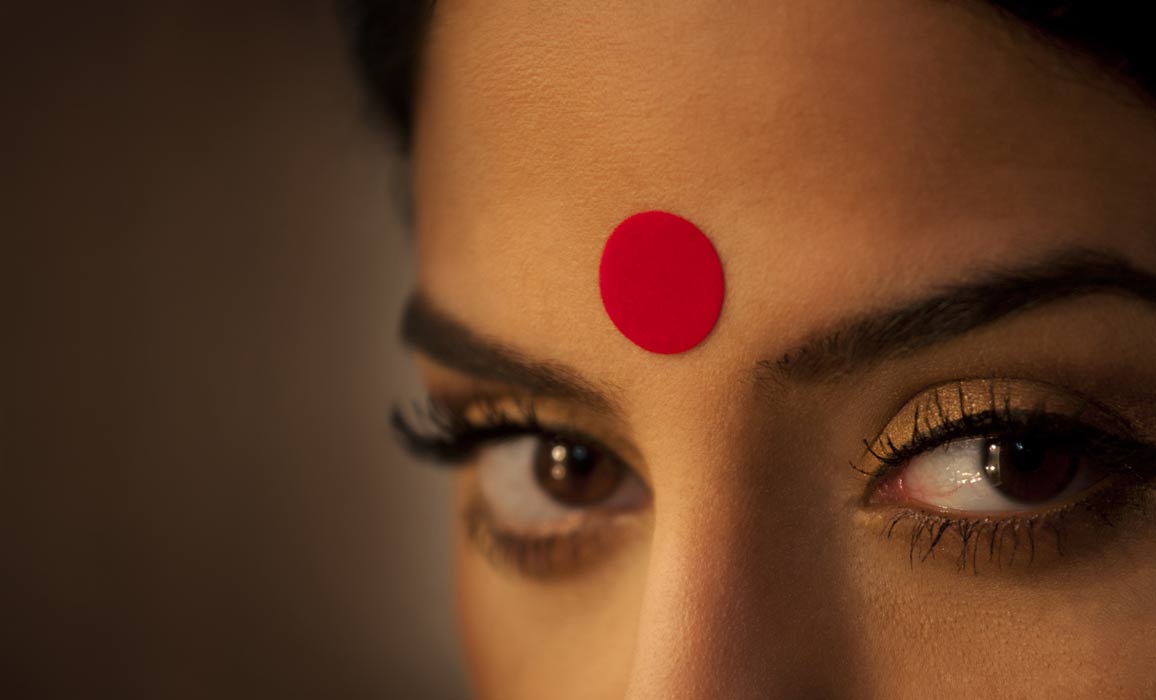
One of the characteristic features of an Indian woman is the humble Bindi. It is not only worn by married women but also by young girls and unmarried ladies as well. Bindi is a small red or maroon-coloured dot worn by women between their eyebrows on their foreheads. Bindi is known by many names such as Pottu, Bottu, Sindoor, Kumkum etc... in different parts of India. They were traditionally made from vermilion, sandalwood paste or turmeric. Nowadays, ready-made Bindi’s are available in the market, where the women can peel them and stick them on their foreheads. During the time of one’s wedding, the Bridegroom applies vermilion on the forehead of his Bride.
The Holy Vedas and scientific evidence point out that the forehead is a significant place of energy in one’s body. It is the place of Ajna chakra; where the Pineal gland is situated. Activation of this gland leads to the optimal production of Melatonin and other hormones for the well-being of the body. When women wear Bindhi, the Pineal gland gets activated leading to immense health benefits.
2. Tika on the Hair partition
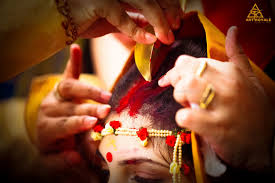
A long line is drawn with vermillion through the middle partition of the hair of a Hindu married woman. This is the symbol of peace, happiness and most importantly - Fertility. In Hindu mythology, it is believed that Goddess Parvathi used to put Sindoor on her hair partition and hence, it is widely believed that Goddess Parvathi protects the husbands whose wives put Sindoor on their hair partition.
When a married woman draws a line with Sindoor, it touches a spot called ‘Brahmarandhra’. This spot is of immense spiritual significance. When a child is born, there is a tender spot on the middle of the head ( where there are no bones found - after a few years, this spot gets covered with bones). This tender spot is called Brahmarandhara. It is through this passage/spot that a soul enters one’s body. When one wears the Sindoor on the hair partition, it is a representation of the power of women - who can create life on earth.
3. Mangalsutra
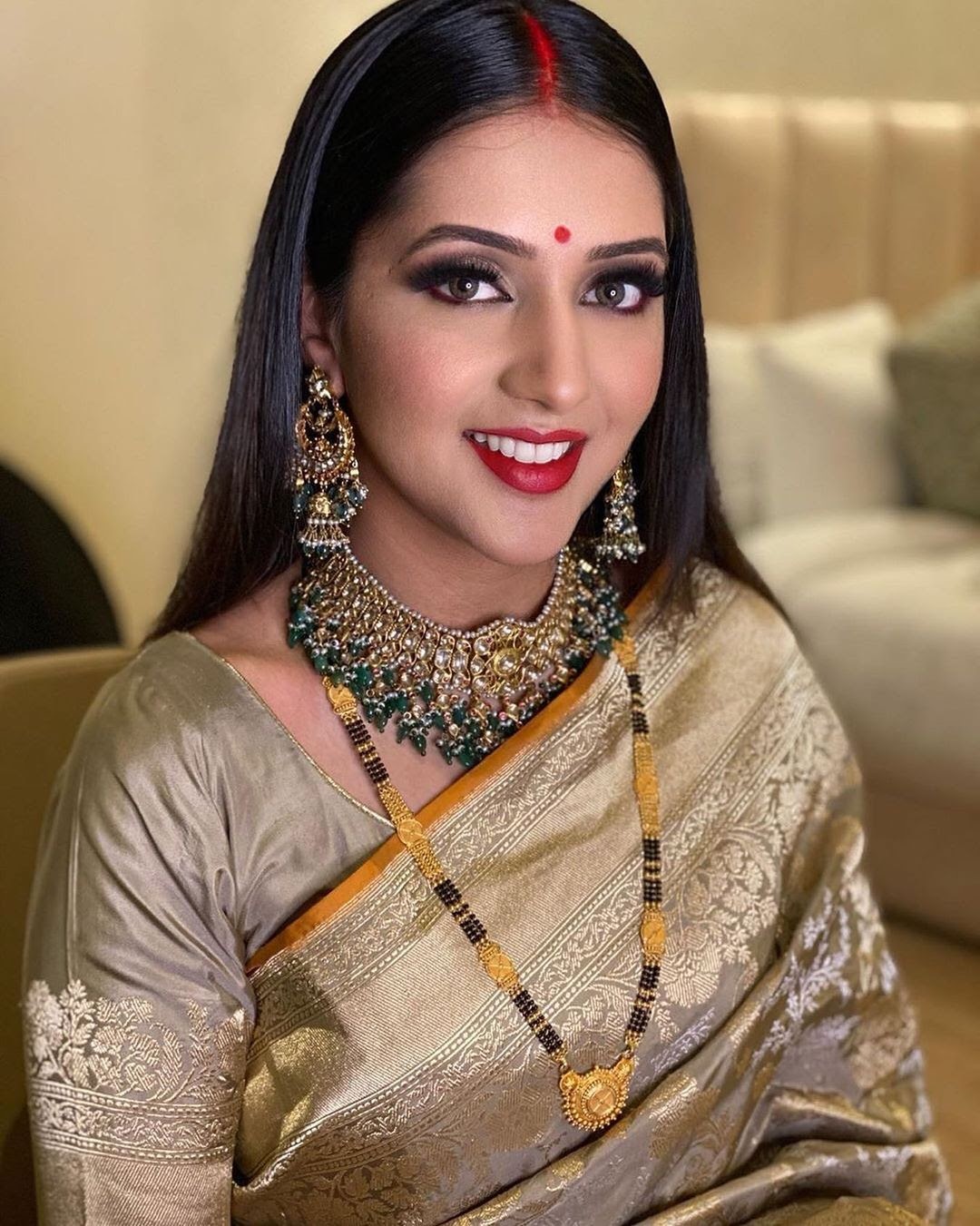
A Mangalsutra or a Thali is a necklace/chain that a Bridegroom ties around the neck of the Bride. In India, during the wedding, there is a special ceremony called the Mangalya Dharanam that is performed at an auspicious time. The Mangalsutra is tied around the Bride’s neck by the Groom which serves as a visual sign of married women. It is believed that wearing the Mangalsutra enhances the longevity of the husband’s life.
The Mangalsutra or the Thali chain is a long chain reaching until the heart space of the Bride. There is a Chakra called Anahat, which is found in the heart space of a person. The Mangalsutra often touches the heart space of the women who wear it. The thali chain is made up of black beads, pearls, corals or sometimes gold. In some communities, the chain consists of tiny black beads stringed together that help the wearer in protecting from evil eyes. Some people wear Gold mangal sutra. Gold has many healing properties, and when it touches the heart space, it helps in the absorption of Cosmic waves (from the atmosphere) and transmits the vibrations to the person wearing it. Thus, it leads to a healthy, happy life for the lady who wears it.
4. Nose ring
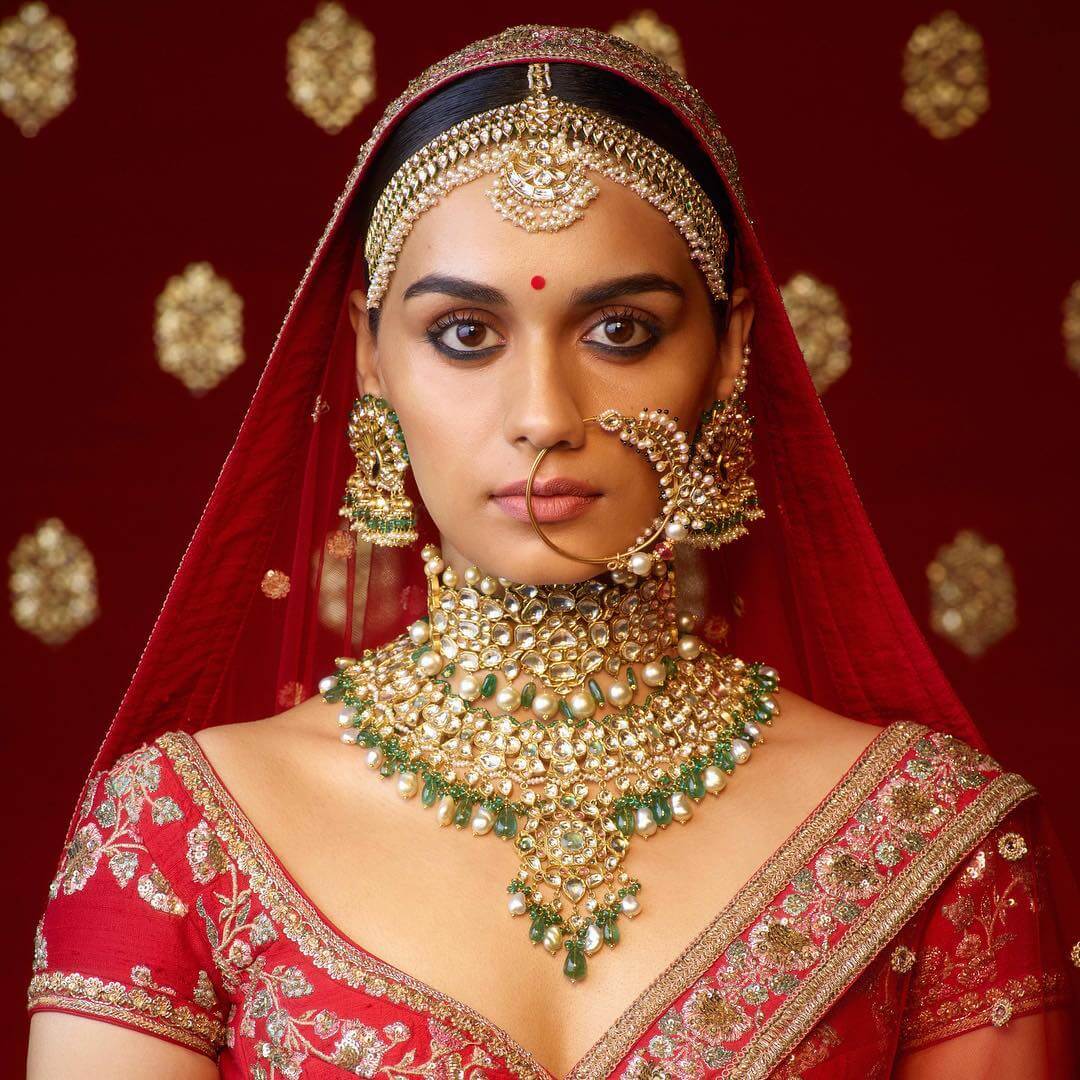
Wearing nose rings is a sign of a married woman in many communities in India. It is also a symbol of status, style, wealth and prestige. In the olden days, every young girl used to pierce her nose ( just like how they pierced ears). Nowadays, this tradition is slowly waning away.
Wearing a nose ring (on the Left Nostril) during a wedding is considered auspicious and a necessity in many communities. This is because the nose has many nerve endings that are linked directly to a woman's health. Nerves that run through the nose have connections with fertility and are linked with female reproductive organs. Also, it helps in reducing menstrual cramps and pain during natural delivery. Hence wearing nose rings helps the women be healthy.
5. Bangles
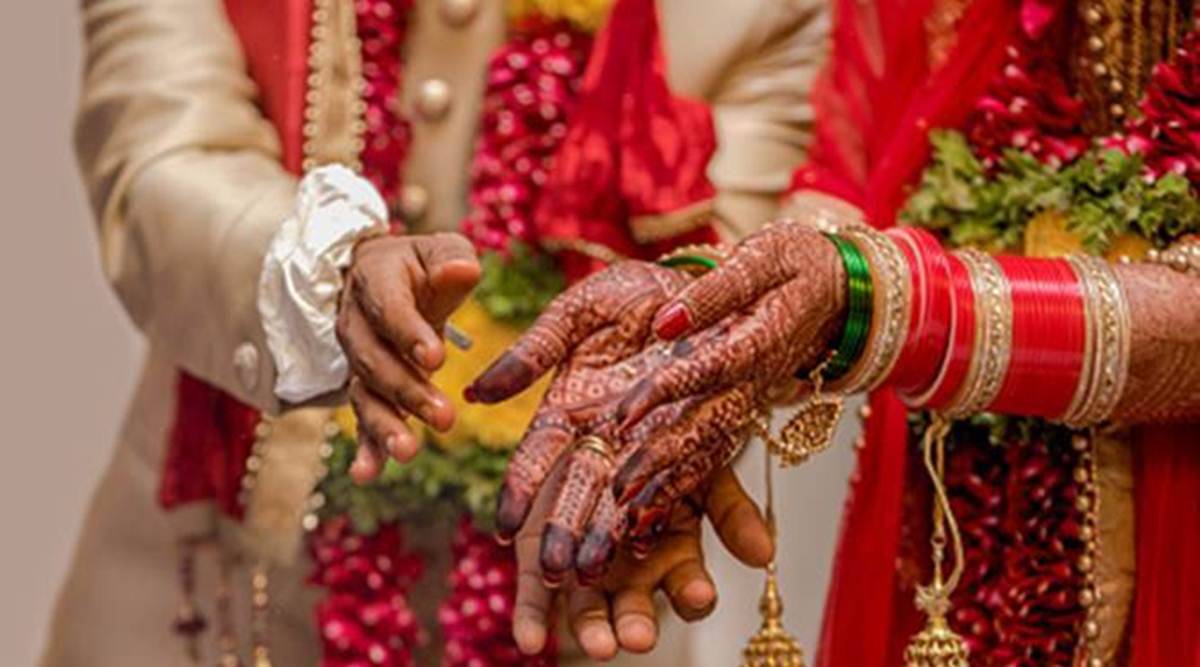
Bangles have been in use in India for many centuries, and young women wear bangles as an accessory to their wardrobe. In marriages and weddings, bangles are essential components in the Bride’s wardrobe. This is because an empty hand is considered a bad omen.
Bangles have tremendous health benefits as well. When women wear bangles and go about their household chores, it causes friction on their wrists, which will increase blood circulation. Wearing bangles also helps in reducing impatience and reduces anger. Traditionally married women used to wear glass bangles on their wrists. This is used to remove the negative energies around a person.
6. Toe Ring
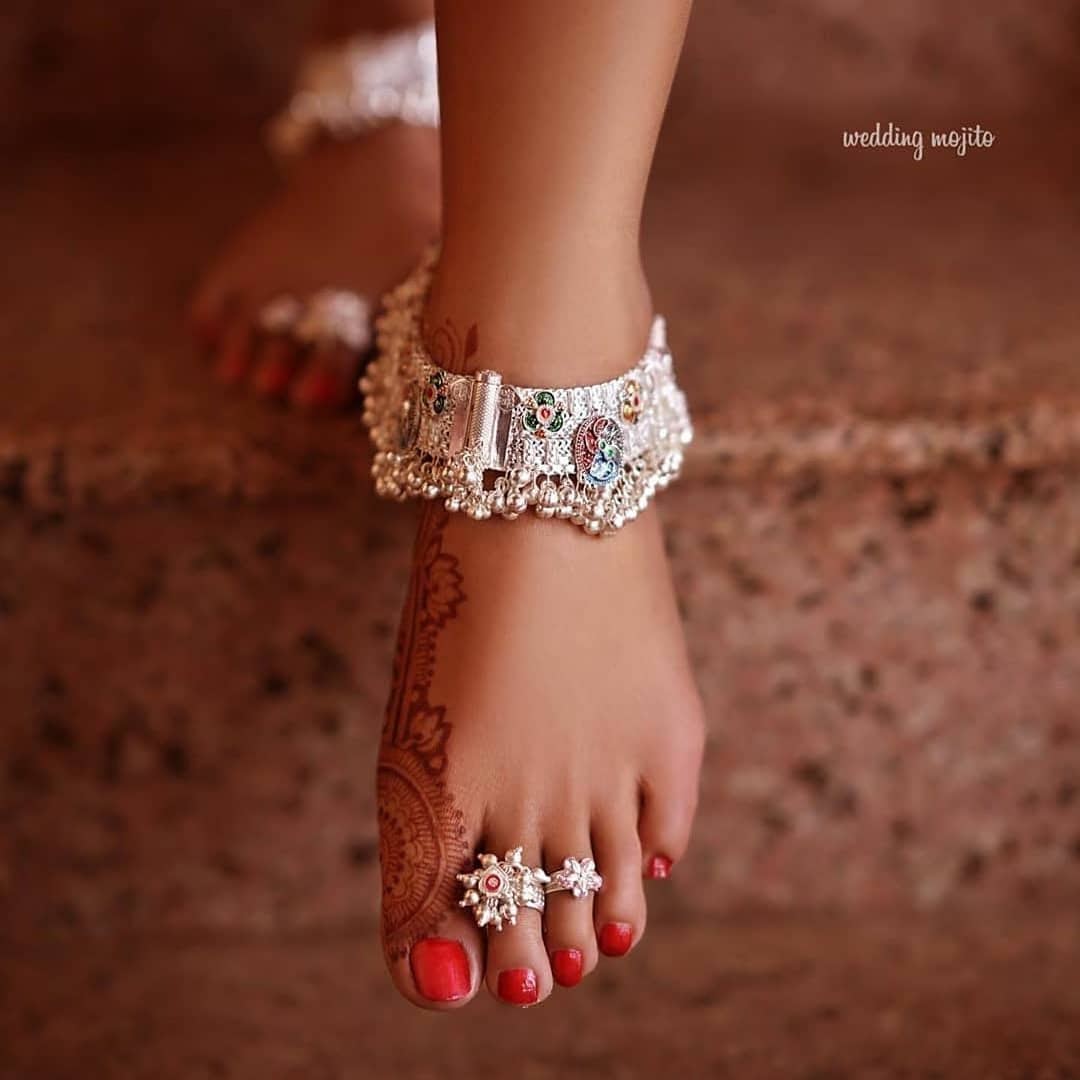
A Toe ring, as the name suggests, is a ring that is worn on the toes of the feet. It is widely worn by married women on their second toes on either of their feet. These tiny rings are made up of metals like silver and other alloys. They are also called by different names like Metti, Minchi, Mettulu, Bichiya etc…
Toe rings are worn as a symbol of being married and they are not removed throughout one's lifetime. In the olden days, toe rings were worn by both men and women. Men used to wear toe rings in the olden days. It was a way to identify a married man. Nowadays, the men remove their toe rings after their wedding ceremony. However, the women continue to wear them after the wedding ceremony. During the wedding ceremony, the husband usually puts the toe rings on his wife’s second toe on both her feet.
According to Ayurveda, the nerves of the second toes are connected to the uterus. When slight pressure is applied to the nerves, ( in the form of toe rings) they get activated. Thus, it helps in regulating one’s menstrual cycle, relieves menstrual cramps and helps in having a healthy uterus.
7. Anklets / Payal
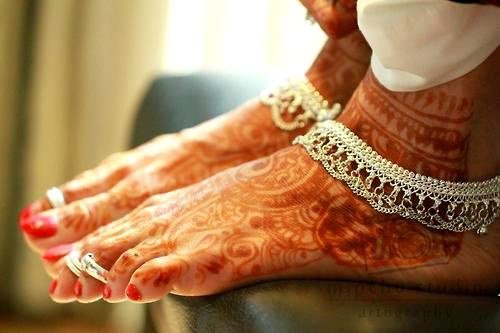
Anklets are known by the name Payal ( in Hindi) or Kaal Kollusu ( in Tamil). They are a beauty accessory worn by ladies and women since time immemorial on their ankles. Anklets are usually made up of silver and often come with tiny beads, pearls or small bells. The anklets make a low pitched sound and show the men in the house that the lady is approaching him.
Anklets also have many health benefits. Silver is a highly reactive metal and helps in boosting one's immune system. Thus, when a woman constantly wears Silver, it helps her immune system. The body emits a lot of vibrations, and the metal silver absorbs it and sends it back into the body. Thus, creating more positive vibrations in the person who wears the anklets.
The symbols and accessories that a married Hindu woman wears can look very symbolic to an outsider (of Indian customs and tradition), yet it holds immense Spiritual, mental and physical benefits for the Women who follow them. It only shows the deep-rooted knowledge of the ancestors who created the customs and their reverence towards the women.

I am Vaishnavi Gurusankar, a passionate educator, a wife and a mother. I have over a decade of experience as an educator and have been closely working with teachers and children of all ages. I am also an active parenting blogger and founder of Magical Unicorn, an exclusive parenting blog founded on Indian ethos, values and stories at its core.
NEXT ARTICLE

At the southernmost tip of this mesmerising ensemble lies the majestic Great Nicobar Island, boasting an impressive landmass of about 910 square kilom...

Bharath has always been a land traversed by spiritual masters/ Guru since time immemorial. These spiritual masters have always upheld the core princip...

South India contains its fair share of unique pilgrimage centres. These divine places of worship have a prominent Sthala Purana, devoted followers, di...